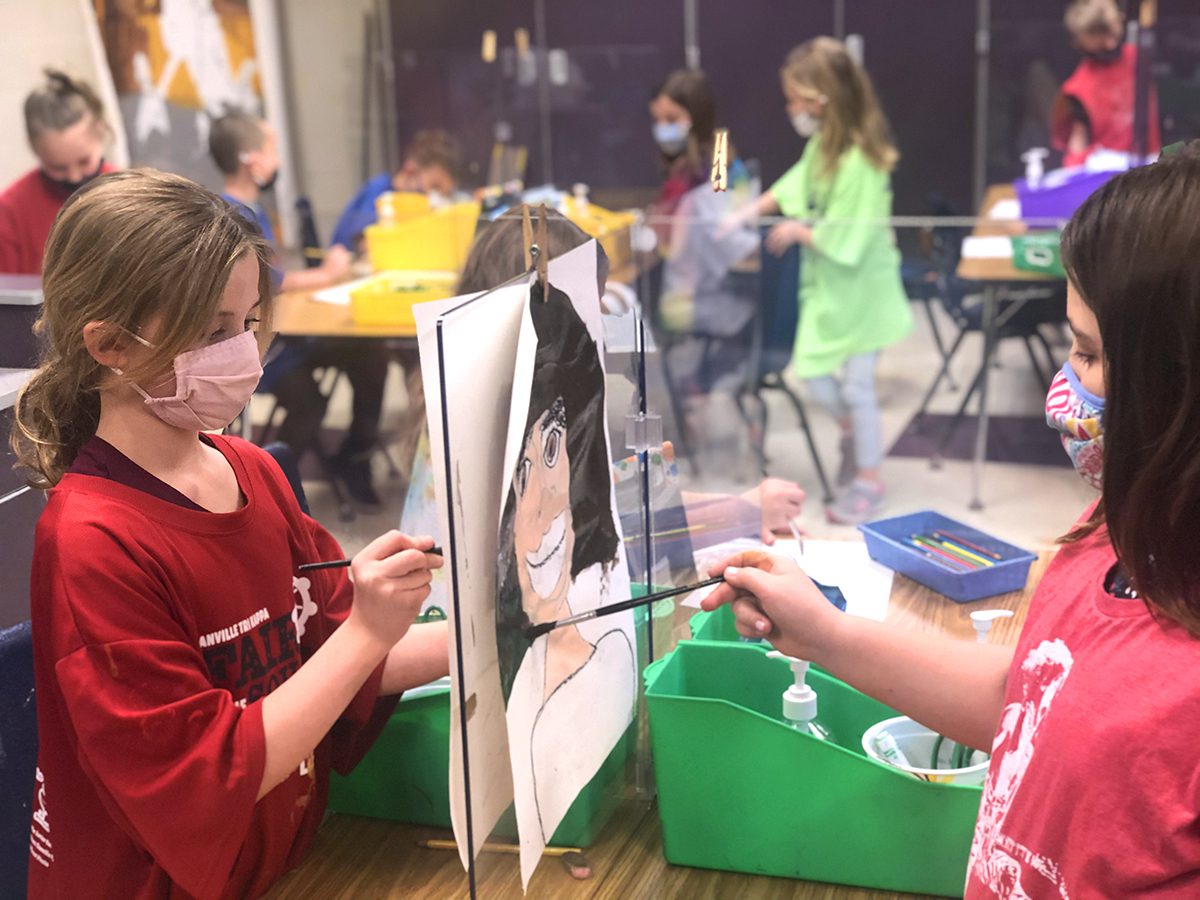The past year has brought numerous changes for all art teachers. Cleaning protocols, schedule adjustments, and daily instructional modifications are just the beginning. Plenty of these challenges are ones many teachers never want to talk about again! But, on the other hand, this year of change allowed the innovation of new strategies and practices to take place in the trenches of our classrooms. So much good came out of this year!
Ten art teachers reflect on unexpected challenges that prompted opportunities for rethinking art education practices.
As you read through the ideas below, see which resonate with you, and reflect on your own practice. Which unexpected challenges forced you to think in new ways? What new practices or procedures will you continue to use as you move forward?
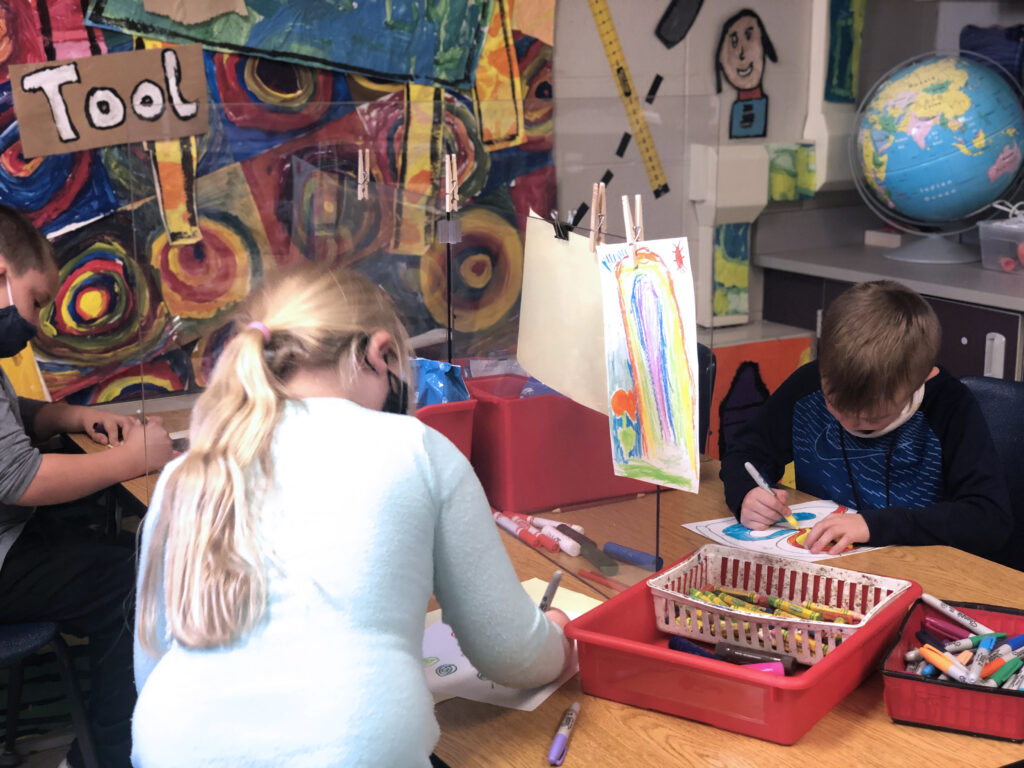
1. Create individual studio spaces to help students feel like artists.
Independent student workspaces, both socially distanced in school and isolated at home, are a challenge. However, according to Catherine Davis Hayes, an elementary teacher in Warwick, RI, they also have some upsides. These spaces provide students a place to call their own, like an artist’s studio. In an individual space, students can make autonomous choices with materials and techniques. As social distancing rules fade, continuing to offer students a place to call their own is an effective engagement tool.
2. Try plexiglass gallery walks to make the most of dividers.
Some classrooms have plexiglass dividers to split tables. Katie Pourcho, a Pre-K–2nd-grade teacher in Danville, IN, clips finished artworks to the dividers for gallery walks at the end of class. Consider using the dividers as easels, brainstorming boards with dry erase markers, display surfaces, or a place to mount mobile sculptures. When these dividers are no longer necessary, you may decide to hold onto a few for continued creating and sharing!
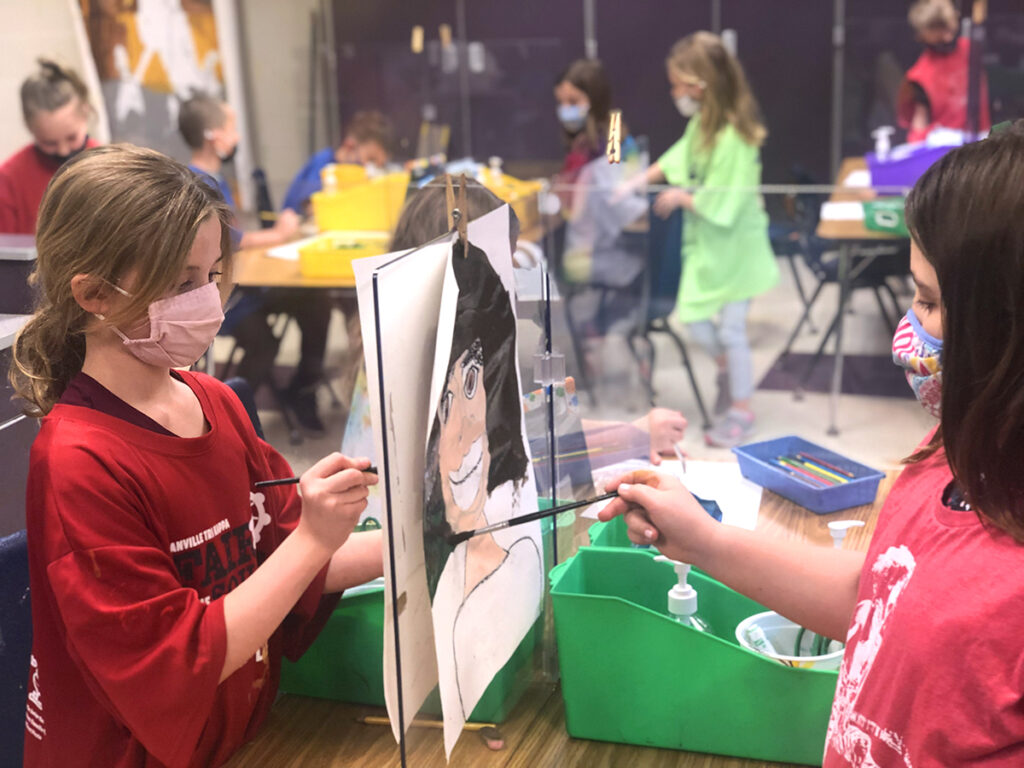
3. Highlight digital art as you talk about careers.
Take advantage of having all of your students on a digital device! Tying in vector and raster drawing teaches transferable vocational skills and allows students to create art at home without owning or having access to traditional artmaking supplies. For example, Terry Stewart, a deaf K–12 teacher who teaches Deaf students in Columbus, OH, had all students use iPads to explore 3D modeling.
4. Build a timeless video resource database for future classes.
Create short video presentations for your students about artists, techniques, and class expectations to continually embed in multiple lessons, both for additional classes and in future years. Courtney Jones, a K–5 teacher in Lejeune, NC, loves how her pre-recorded lesson introductions give her extra time to clean up from the last class!
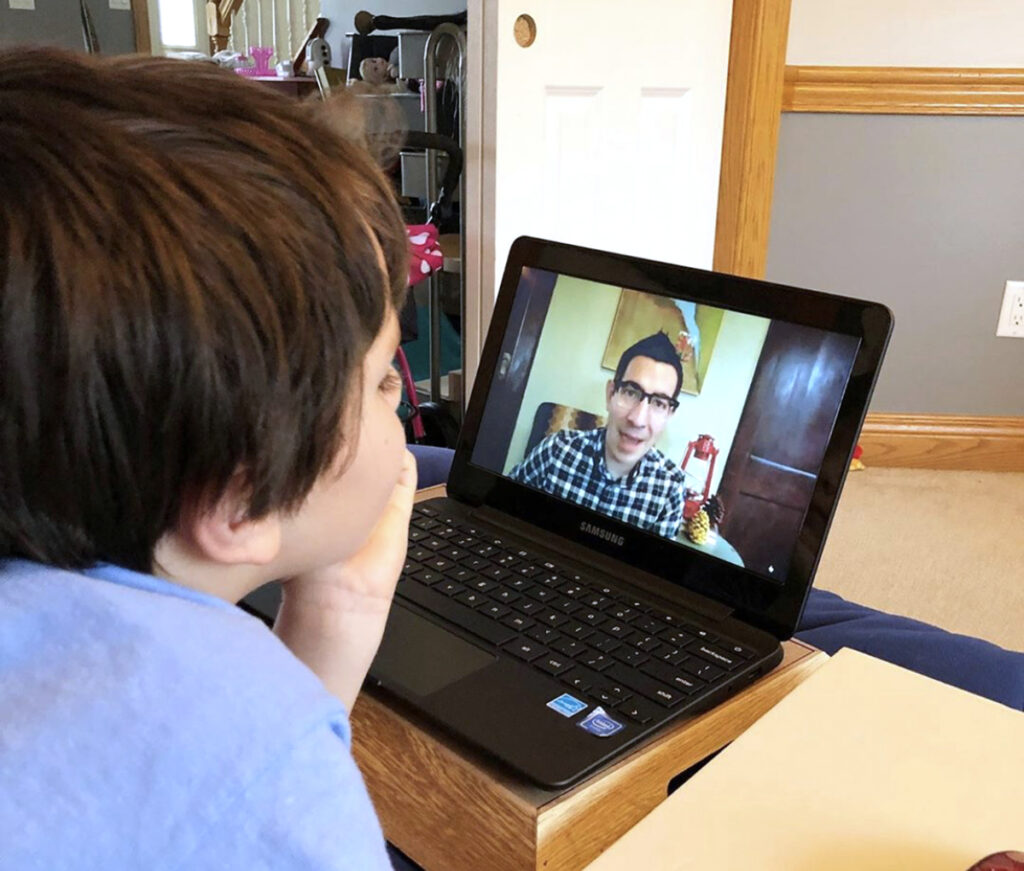
5. Provide pre-recorded videos for students to work at their own pace.
We’ve all heard this recurring statement in the past year, “My WIFI cut out. Did I miss anything?” Much like the previous tip, record short video clips for students to refer to if they need a refresher about a specific process—or if they missed the content due to a weak internet connection. Pilar Biller, a high school teacher in Reno, NV, allows students to work through the videos at their own pace. These clips also free up time to help the class as a whole.
6. Record reflections to allow all students to participate verbally.
Don Masse, an elementary teacher in San Diego, CA, has his students use the microphone tool in Seesaw to record reflections on their inspiration, process, and final art piece. Often there is not enough time in the class period to hear from each student. This tool allows you to hear from all students! When class is no longer virtual, consider setting up a recording station in your classroom to continue this practice.
7. Plan virtual field trips to expose students to new experiences.
Students love field trips! Virtual field trips are a way to continue this activity safely. It also opens up opportunities to “visit” museums and “tour” studio spaces across the country and world! Shawn Gritzmacher, a high school teacher, brought effects artists who worked on Space Jam from Australia virtually into his classroom in White Bear Lake, MN! Virtual field trips also allow all students with internet and a device to acess these experiences, often free of cost. Students can also ask questions they may never have been brave enough to ask in person.
8. Keep a permanent record of submissions and feedback.
Kaylee Haggerty, a high school teacher in Freedom, PA, uses Google Classroom to manage all assignments and communication. Google Classroom, or other learning management systems, provide a permanent record of all data. All student submissions are time-stamped, as are all teacher announcements and deadlines. You can quickly type a comment with specific feedback and post it to the corresponding assignment. No more worrying about handwriting being legible or the sticky note or rubric falling off! All communication with questions, responses, and comments are archived for future conferences and reference.
9. Maximize instructional time with digital substitute plans and absent work.
Embed short recordings into slide show presentations for asynchronous days, substitute teachers, or makeup work for absent students. Christopher Morris, an elementary teacher in Buffalo Grove, IL, found this relieves stress from both the teacher and the students—the teacher has a “backup,” and the students have increased accessibility.
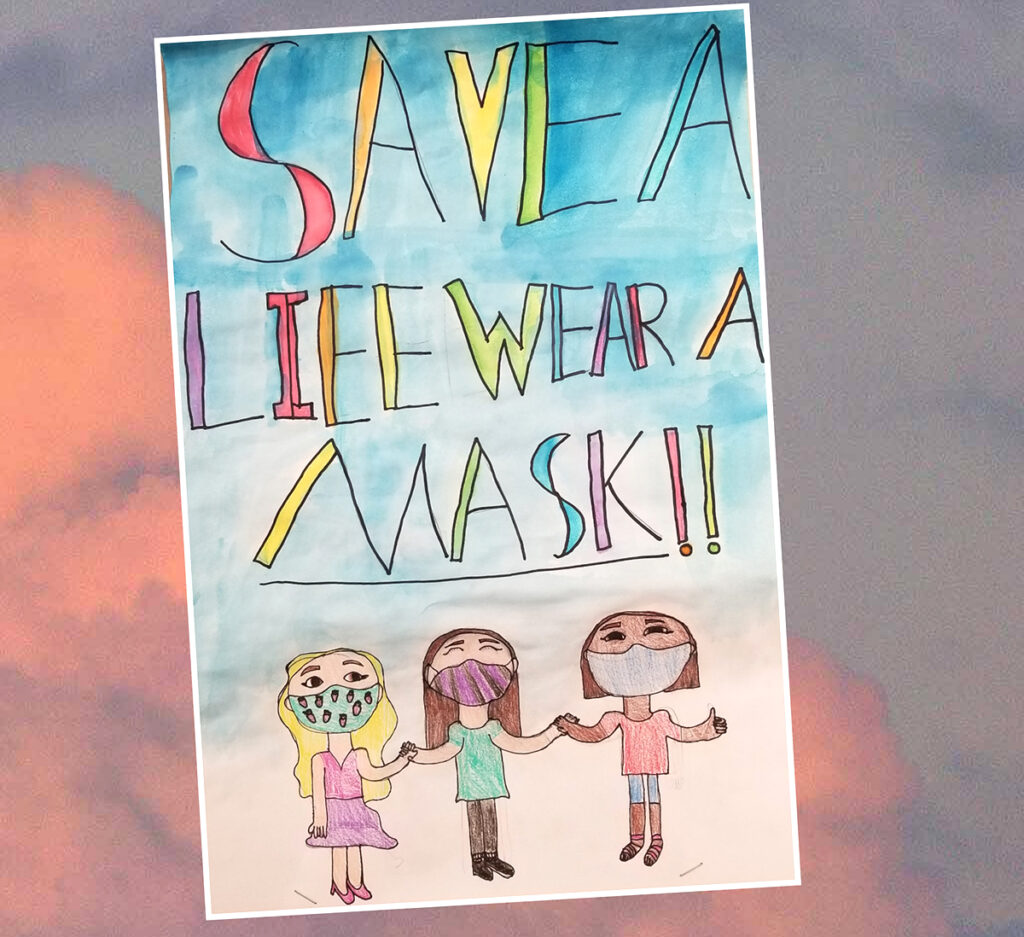
10. Incorporate real-world issues to foster engagement and critical thinking.
Less class time with students, paired with teaching virtually, makes it more challenging to focus on technical proficiency in artmaking. Shifting the focus off of skill competency and onto social justice issues will positively impact the curriculum. More students engage with the relevant subject matter, and they are pushed to think more critically. When working through heavy real-world issues, Chelsea Dipman, an elementary teacher in Marion, OH, discovered the importance of slowing down and making time for self-care through gratitude journaling and hiking to be fully present for her students.
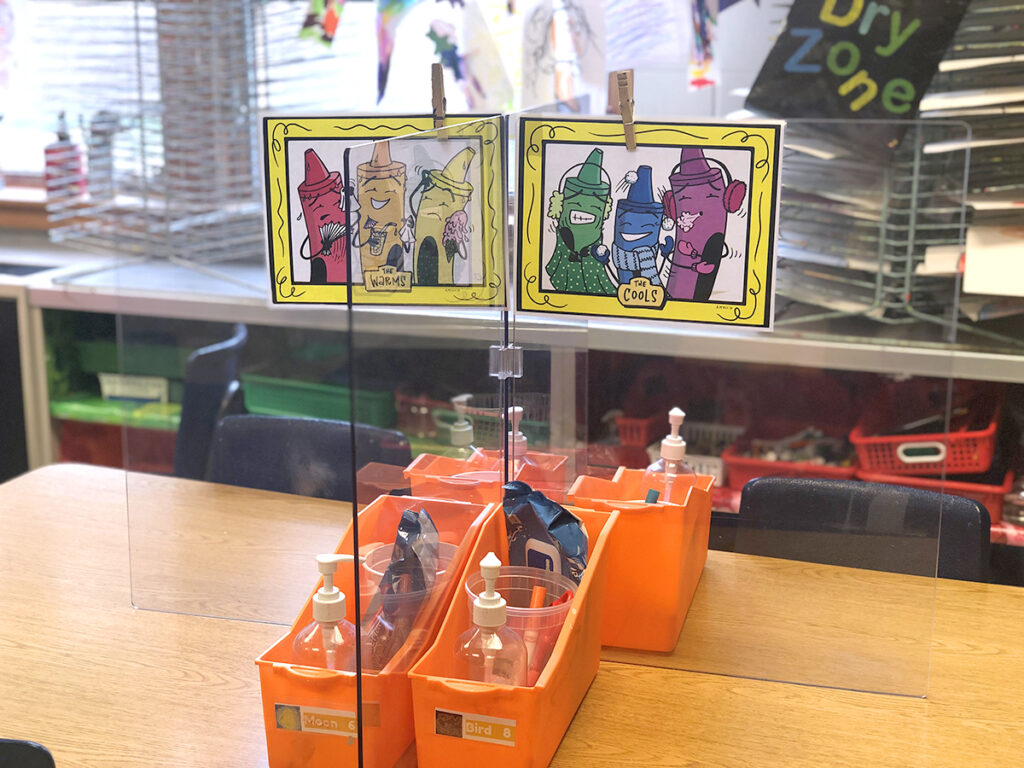
Despite all the change and upheaval this past school year threw at us, these ten art teachers found ways to thrive and grow in their practice. From shifting perspectives on what a studio space should look like to utilizing the plexiglass dividers, we discovered that the physical classroom is not what defines our artrooms. Taking advantage of technology to record lessons makes them more accessible to students at their own pace, both in the current school year and in years to come. Overcoming supply distribution and media difficulties by incorporating digital art and social justice issues can stretch our knowledge as teachers. When we adjust our attitude, we can embrace challenges as opportunities!
As you reflect on this past year, what is one challenge you turned into a positive opportunity?
What is one strategy you used this year that you will be certain to continue?
How will your newfound technology knowledge inform your art instruction next year?
Magazine articles and podcasts are opinions of professional education contributors and do not necessarily represent the position of the Art of Education University (AOEU) or its academic offerings. Contributors use terms in the way they are most often talked about in the scope of their educational experiences.
